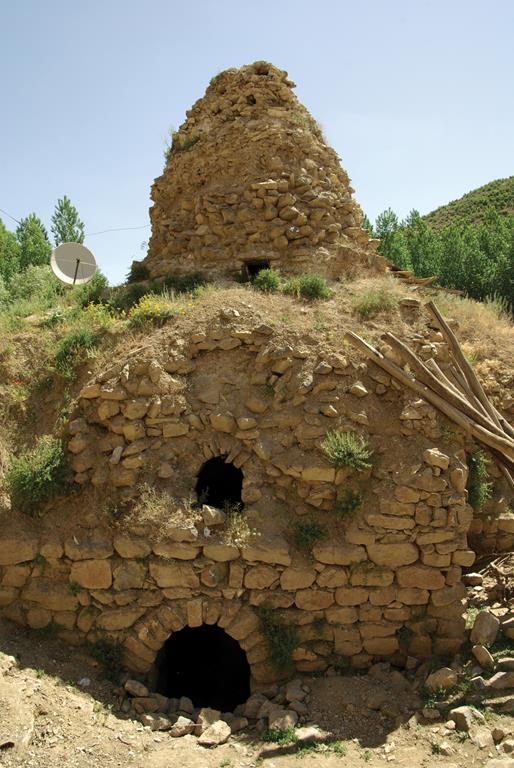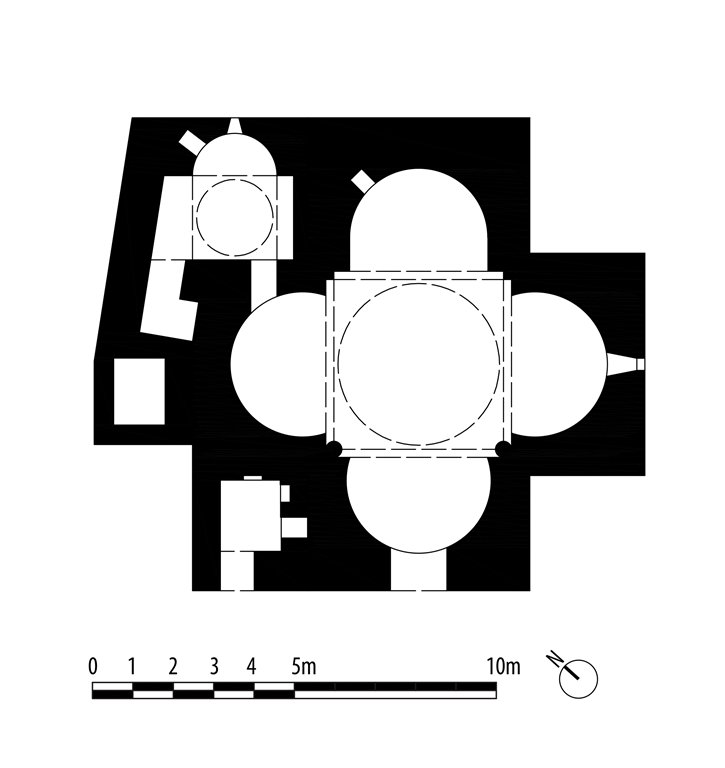This ancient church gave its name to the village where it stands: Surp Diguin, “The Holy Lady” [Elmalı] or Sev Diguin “The Black Lady”. The village itself lies not far from an abundant spring, on the right bank of the river of the same name [Uluçay], at 38° 04’ N and 43° 04’ E, upriver from Shadakh [Çatak]. Located south of Ostan [Gevaş] on the southern slopes of the Gortug mountains – the Mount Ardos chain [Çadır Dağı] – this region makes up the Armenian canton of Pujunik‘.
The site is one of the stages in the wanderings of the Holy Women reported in the Story of Hripsimé and the Holy Women, written sometime in the 9th century. After having left the vicinity of the Holy Cross (n° 29) in Moxoene, or Mogs Country, they visited Mount Sararat, in the south, then, traveling back by way of the Zab Valley to the valley of the eastern Tigris, they stopped near an abundantly flowing spring in the place called Holy Lady. This indication bespeaks a very old dedication to the Virgin, preserved even today by this church, around which was constructed a small convent, plundered during the 1895 massacres and which could not be rebuilt in 1915.

Façade ouest, 2007 (Coll. privée)
The church of the Holy Lady is a tetraconch in the form of a cross, without pillars, and with an octagonal drum covered with a pyramidal roof, measuring 11.5 m on both axes; the typology dates it to the 7th century. It was enlarged, most probably in the 9th century, by the addition of a domed chapel with which it communicates and which occupies the northeast corner of the cross, extending beyond the east and north arms by 4.3 and 2.4 m respectively. The entire northwest corner is taken up by a small sacristy of 2.7 m on a side.

Plan (Thierry, 1989, 447 after M. Dupin)
The church of the Holy Lady was confiscated after the Great War. Today it is still standing, completely hemmed in by houses, but has lost the near totality of its outside covering stones and its roof. In 2010 holes were beginning to appear in the dome.
Thierry, Vasp., Paris, 1989, 446-448. Outtier, Thierry, Syria, 67(3-4), 1990, 721-723. Kévorkian-Paboudjian, 1992, 551. Der Ghazarian, 2011, h. t